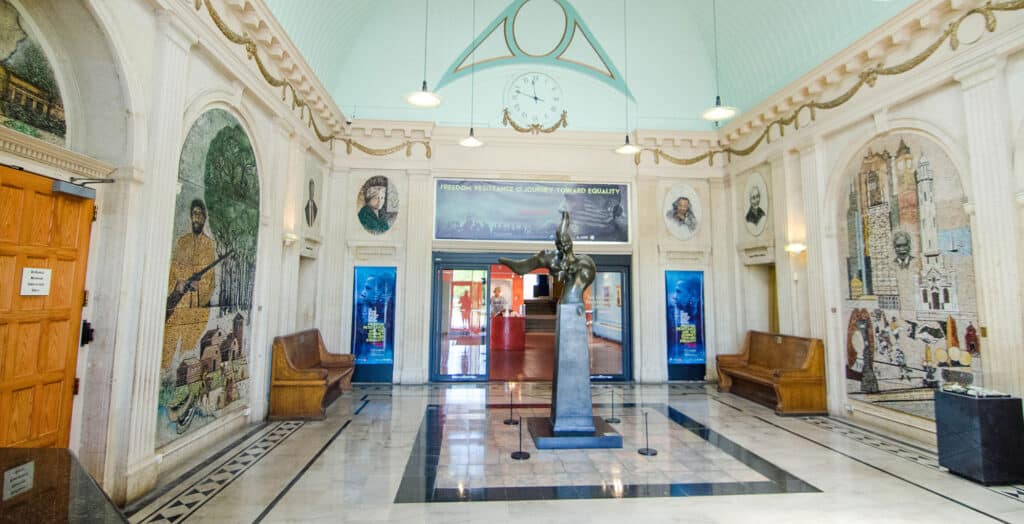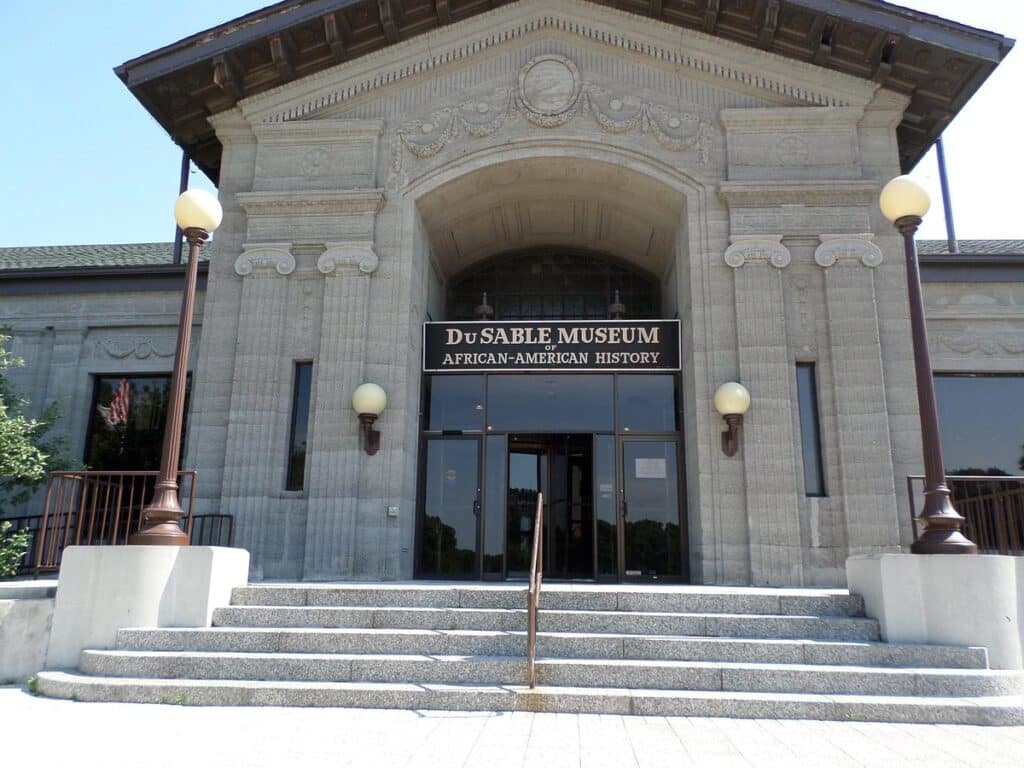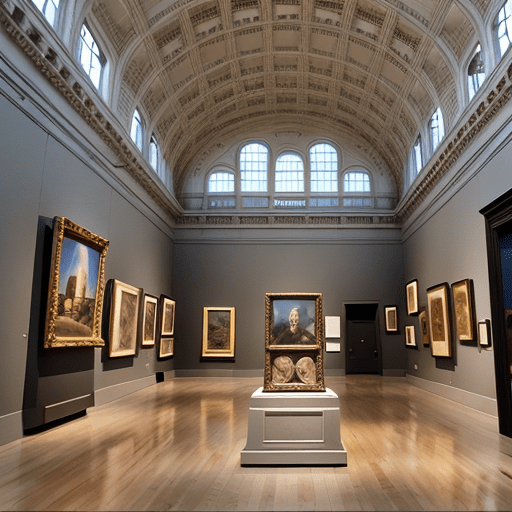The DuSable Museum of African American History: A Beacon of Black Culture and Heritage
In Chicago’s Hyde Park, stands an institution that has been enlightening and inspiring visitors for over six decades. The DuSable Museum of African American History serves as a beacon of black culture and heritage. It is a testament to the resilience, creativity, and spirit of Africans and their descendants in America.
A Unique Museum: Unveiling the African American Legacy
The DuSable Museum is a unique entity in the realm of American museums. It is the first independent institution in the nation dedicated solely to the collection, preservation, and study of African American history, art, and culture. Established in 1961, it was born out of a need to rectify the omission of black history and culture in most museums and academic establishments of the time.

Founding: The Genesis of the DuSable Museum
The inception of the DuSable Museum can be traced back to February 16, 1961. It was initially established as the Ebony Museum of Negro History and Art by several visionaries including Margaret and Charles Burroughs, Bernard Goss, and others. They sought to correct the glaring absence of black history and culture in the education system.
The founding members set up the museum in the ground floor of the Burroughs’ residence at 3806 S. Michigan Avenue. The museum was later renamed in honor of Jean Baptiste Point du Sable, a black African fur trader who was the first non-Native-American permanent settler in Chicago.
Expansion: Growing in Size and Scope
The DuSable Museum saw a significant expansion in 1973 when the Chicago Park District donated a park administration building in Washington Park for the museum. This location previously served as a lockup facility for the Chicago Police Department.
In 1993, a new wing was added to the museum, named after Harold Washington, the first African-American mayor of Chicago. In 2004, the original building became a contributing building to the Washington Park United States Registered Historic District, a National Register of Historic Places listing.
Collection: Artifacts that Narrate a Rich History
The DuSable Museum boasts a collection of 13,000 artifacts, books, photographs, art objects, and memorabilia. These artifacts span from the slavery era in the United States to the nineteenth and twentieth centuries. The collection includes works from scholar W. E. B. Du Bois, sociologist St. Clair Drake, and poet Langston Hughes.
Notable artifacts include the desk of activist Ida B. Wells, the violin of poet Paul Laurence Dunbar, and the Charles Dawson Papers. The African-American art collection features works from South Side Community Art Center students such as Charles White, Richard Hunt, Archibald Motley, Jr., Gus Nall, Charles Sebree, and Marion Perkins.
Facilities: A Space for Learning and Community Engagement
The original north entrance of the museum houses the main lobby and features the Thomas Miller mosaics, which honor the institution’s founders. The new wing of the museum spans 25,000 square feet and includes a 466-seat auditorium that hosts various community-related events such as a jazz and blues music series, poetry readings, film screenings, and other cultural events.
The museum also has a gift shop and a research library. After the 1993 expansion of the new wing, funded by city and state officials, the museum now contains 50,000 square feet of exhibition space.

Impact: A Crucial Role in Preserving and Celebrating Black Culture
The DuSable Museum has played a crucial role in filling the void caused by limited cultural resources available to African Americans in Chicago during its early years. It has become an educational resource for African-American history and culture and a focal point in Chicago for black social activism.
The museum has hosted political fundraisers, community festivals, and various events serving the black community. The model of the museum has been emulated in numerous other cities around the country, including Boston, Los Angeles, and Philadelphia.
The DuSable Museum Today
Today, the DuSable Museum continues to be a vital resource for anyone interested in African and African-American history and culture. It stands as the oldest and, prior to the founding of the National Museum of African American History and Culture in 2016, was the largest caretaker of African-American culture in the United States.
Antoinette Wright, director of the DuSable Museum, has said that African-American art has grown out of a need for the culture to preserve its history orally and in art due to historical obstacles to other forms of documentation. She also believes that the museum serves as a motivational tool for members of a culture that has experienced extensive negativity.
The DuSable Museum of African American History stands as a symbol of pride and resilience. It is a place that celebrates the contributions and achievements of Africans and African Americans, while also providing a space for dialogue, learning, and community engagement. For those looking to delve into the rich tapestry of African American history and culture, a visit to the DuSable Museum is both enlightening and inspiring. For more information, you can visit the website here.


